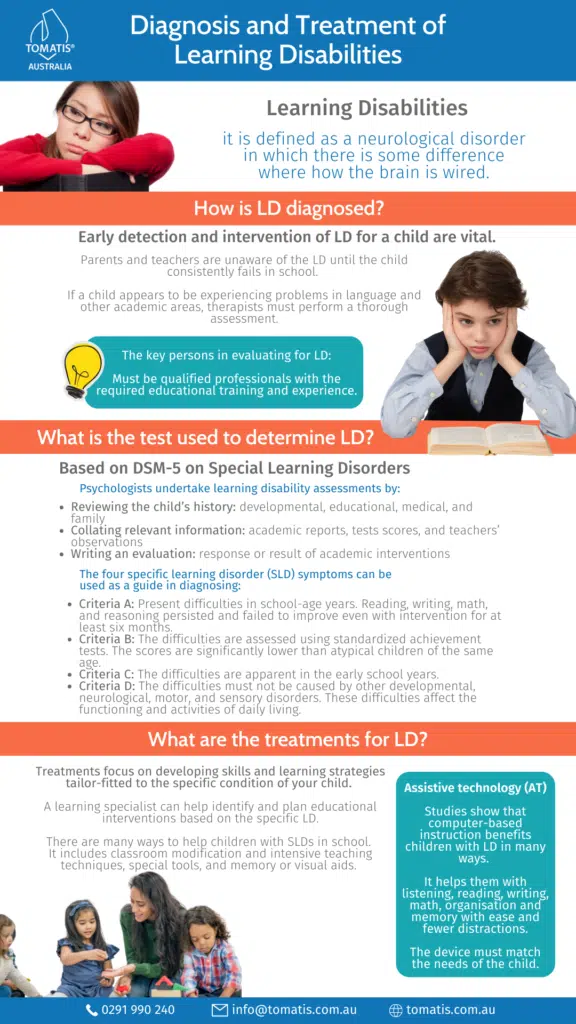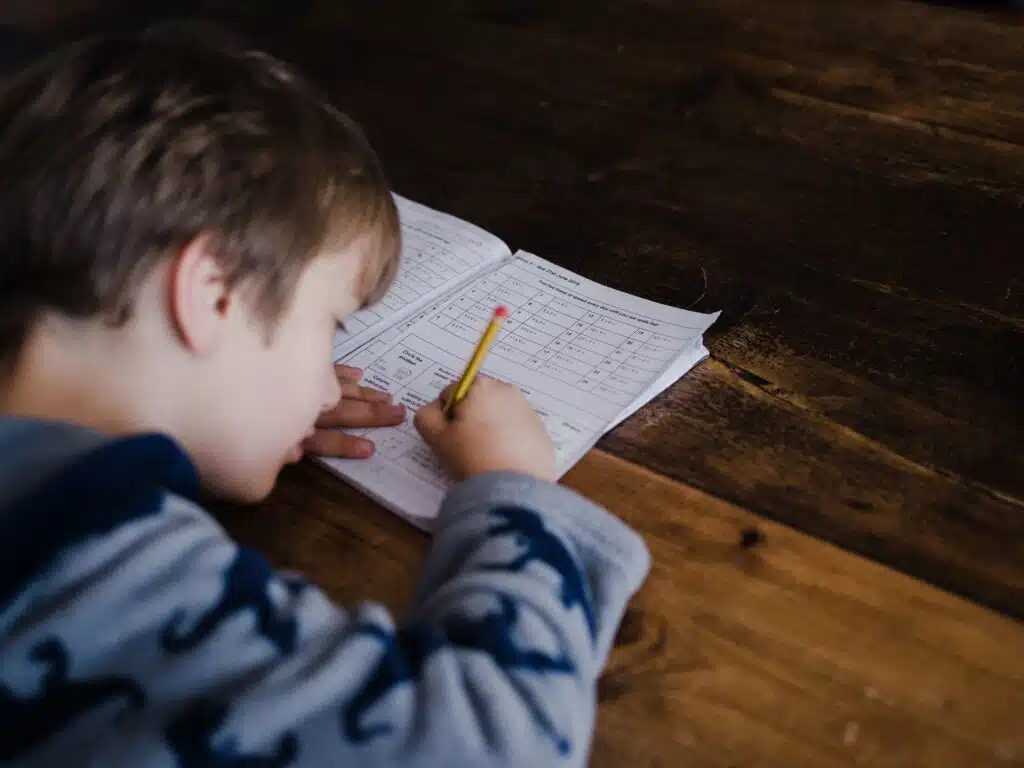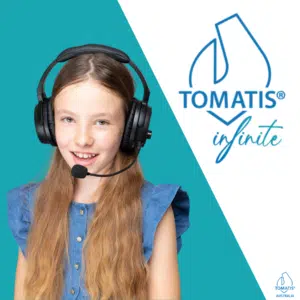SYDNEY, Australia — The term Learning Disabilities seems to be broad. However, it is defined as a neurological disorder in which there is some difference where how the brain is wired, giving five types of learning disabilities. In this blog, we will be talking about the diagnosis and treatment of learning disabilities.
The Tomatis® Method will counter these learning disabilities though how complex it may seem and also discuss a few aspects of learning disability therapy.
How are Learning Disabilities (LD) diagnosed?
Early detection and intervention of LD for a child are vital. Sometimes, parents and teachers are unaware of the LD until the child consistently fails in school. If a child appears to be experiencing problems in language and other academic areas, therapists must perform a thorough assessment.
The key persons in evaluating for LD must be qualified professionals with the required educational training and experience. Teachers can assess LD, while a specialist may diagnose a child for possible problems in a specific academic area. A psychologist can use the appropriate test or standard IQ test and achievement tests in reading, math, and writing.
What is the test used to determine Learning Disabilities (LD)?
Based on DSM-5 on Special Learning Disorders, psychologists undertake to learn disability assessments by:
Reviewing the child’s history: developmental, educational, medical, and family
Collating relevant information: academic reports, tests scores, and teachers’ observations
Writing an evaluation: response or result of academic interventions
Still based on DSM-5, the four specific learning disorder (SLD) symptoms can be used as a guide in diagnosing:
Criteria A: Present difficulties in school-age years. Reading, writing, math, and reasoning persisted and failed to improve even with intervention for at least six months.
Criteria B: The difficulties are assessed using standardised achievement tests. The scores are significantly lower than atypical children of the same age.
Criteria C: The difficulties are apparent in the early school years.
Criteria D: The difficulties must not be caused by other developmental, neurological, motor, and sensory disorders. These difficulties affect the functioning and activities of daily living.
What are the treatments for Learning Disabilities (LD)?
Treatments focus on developing skills and learning strategies tailor-fitted to the specific condition of your child. It usually takes a multidisciplinary team of professionals to do the job.
A learning specialist can help identify and plan educational interventions based on the specific LD and suggest a suitable learning disability therapy for that person. In contrast, a psychologist can conduct psychotherapy and cognitive behaviour therapy or any other learning disability therapy to address behavioural problems.
The two most common learning disability therapy are special education and IEP. Both special education and IEP are customised to your child’s specific needs in a classroom setting. Parents, teachers, and administrators collaborate to create a program and conducive environment for your child.
There are many ways to help children with SLDs in school. It includes classroom modification and intensive teaching techniques, special tools, and memory or visual aids.
How does assistive technology help people with LD?
Assistive technology (AT) for LD are computer-based programs or applications. ATs may be low- or high-tech gadgets that can be used as learning aids. They take off the burden from children who have a hard time writing.
ATs include laptop and computerised devices such as tablets integrated with instructions and software functions. Studies show that computer-based instruction benefits children with LD in many ways. It helps them with listening, reading, writing, math, organisation and memory with ease and fewer distractions.
Every SLD has a corresponding AT tool. Some of the examples are the following:
- Listening: Audio recorder or assistive listening device
- Reading: Speech synthesis or text-to-speech software
- Writing: Word Processor, spell checker, or speech-to-text software
- Math: Electronic worksheet or talking calculator
- Memory: Personal Data Manager and audio recorder
- Organisation: Same as memory tools
The key to selecting the appropriate tool for a child is a thorough evaluation. The device must match the needs of the child. It is also necessary that teachers are trained on the proper use of the AT to optimise its effectiveness.

The Tomatis® Method As An Intervention
We understand the need to eliminate learning struggles within someone you, and that’s why we’re here to help. With the Tomatis® Method, you can get help from a professional and undergo an effective process of intervention. Get a FREE 20-min call with Franciose Nicoloff, our resident Tomatis® Method psychologist.
Françoise Nicoloff
Official Representative of Tomatis Developpement SA in Australia, Asia and South Pacific, Director of the Australian Tomatis® Method, Registered Psychologist, Certified Tomatis® Consultant Senior, Tomatis® International Trainer and Speaker, Co-author of the Listening Journey Series, 40 Years of Experience, Neurodiversity Speaker




